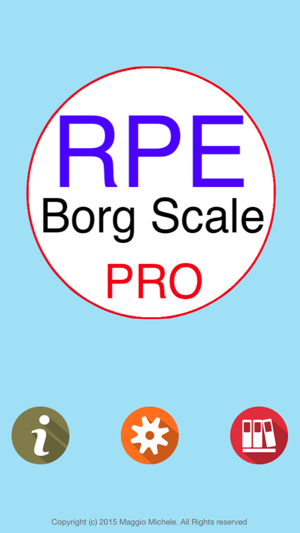價格:免費
更新日期:2016-02-17
檔案大小:10.5 MB
目前版本:1.1
版本需求:需要 iOS 7.1 或以上版本。與 iPhone、iPad 及 iPod touch 相容。
支援語言:英語

In sports and particularly exercise testing, the Borg Rating of Perceived Exertion (RPE) Scale measures perceived exertion. In medicine this is used to document the patient's exertion during a test, and sports coaches use the scale to assess the intensity of training and competition. The original scale introduced by Gunnar Borg rated exertion on a scale of 6-20. Borg then constructed a category (C) ratio (R) scale, the Borg CR10 Scale. This is especially used in clinical diagnosis of breathlessness and dyspnea, chest pain, angina and musculo-skeletal pain. The CR-10 scale is best suited when there is an overriding sensation arising either from a specific area of the body, for example, muscle pain, ache or fatigue in the quadriceps or from pulmonary responses.
The Borg scale can be compared to other linear scales such as the Likert scale or a visual analogue scale. The sensitivity and reproducibility of the results are broadly very similar, although the Borg may outperform the Likert scale in some cases.
The seemingly odd range of 6-20 is to follow the general heart rate of a healthy adult by multiplying by 10. For instance, a perceived exertion of 12 would be expected to coincide with a heart rate of roughly 120 beats per minute.

Protocols:
- [6-20]
- [0-10]

- [0-100]
Execution:
After adding subject's information, select protocol type and choose your time interval between rates.

To make the test run more precise, it was introduced a voice command, which will notify the exact moment to enter the value.

支援平台:iPhone, iPad
